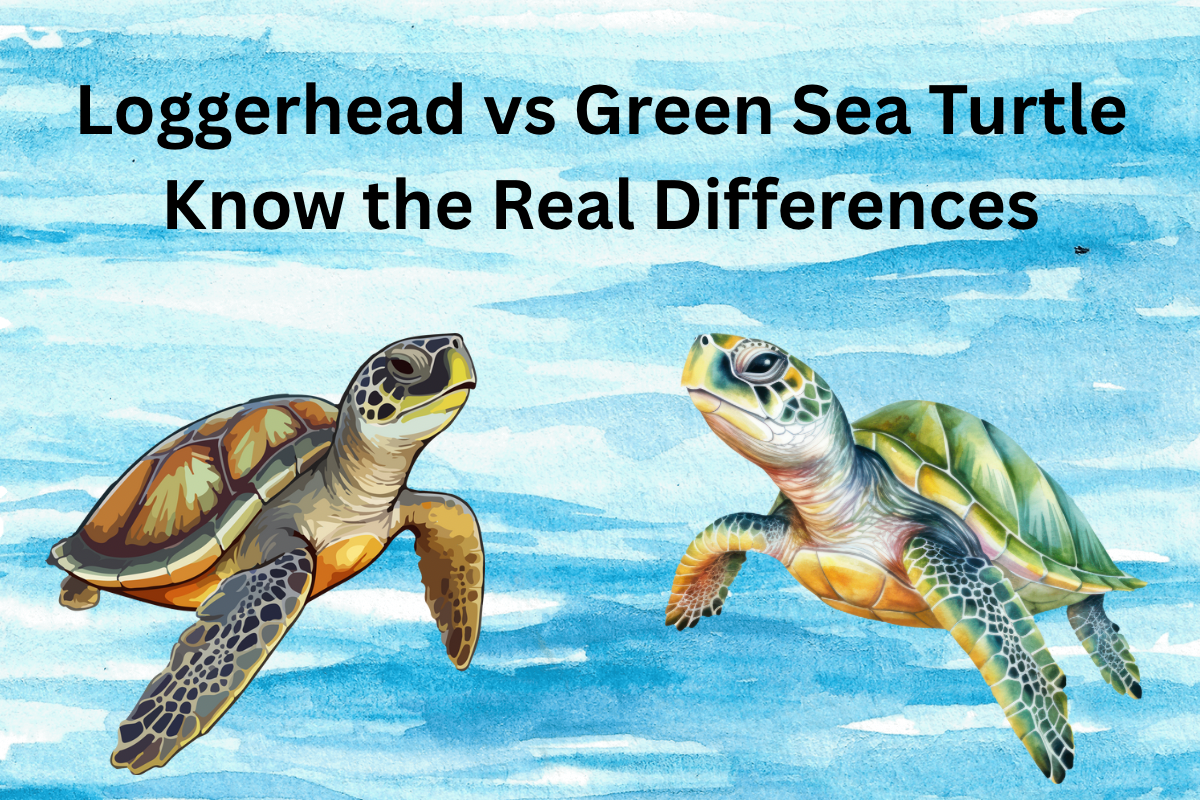
Loggerhead vs Green Sea Turtle: What Makes Them Different?
If you’ve ever stood on a beach or watched a nature documentary and wondered what’s the difference between a loggerhead and a green sea turtle?—you’re not alone. These two ocean reptiles often get mixed up, but they’re incredibly different once you get to know them. As someone who’s obsessed with learning about turtles, let me break it down clearly for you.
Where They Live: Different Waters, Similar Destinations
Both turtles are world travelers, but their favorite vacation spots aren’t always the same.
Loggerhead sea turtles are commonly found in the Atlantic, Pacific, and Indian Oceans, often nesting along the southeastern U.S. and Japan. Green sea turtles also have a global range but love tropical and subtropical waters, with hotspots in Hawaii, the Great Barrier Reef, and Costa Rica.
So if you’re snorkeling in warm, clear water—there’s a good chance you might spot a green sea turtle. But loggerheads? You’re more likely to meet them in cooler, deeper areas offshore.
👉 Want to learn more about their oceanic cousins? Check out our guide on the Leatherback Turtle: The Giant of the Ocean.

Size Matters: Who’s Bigger?
Here’s a fun fact—green sea turtles are usually larger than loggerheads!
- Green sea turtles can grow up to 5 feet long and weigh over 400 pounds.
- Loggerheads top out around 3.5 feet and 250-300 pounds.
It’s one of the easiest ways to tell them apart. That and their head shape, which we’ll get into next…
Head Shape and Beak: It’s in the Name
Loggerheads are named for their big, blocky heads and strong jaws. They need those powerful beaks to crush hard-shelled prey like crabs and mollusks.
Green turtles, on the other hand, have smaller, sleeker heads and a more serrated beak, perfect for grazing on seagrasses and algae. Their feeding style is gentle and plant-based, which leads to some fascinating differences in their body and biology.

Diet and Digestion: Meat vs. Greens
Loggerheads are carnivores, especially as adults. They feast on:
- Crabs
- Clams
- Jellyfish
- Sea urchins
Green turtles start out omnivorous but shift to an herbivorous diet as they age. That switch to eating mostly plants—like seagrasses and algae—is what gives their fat that greenish color (and yes, that’s where they get their name).
Check out our detailed article on the Green Sea Turtle to dive deeper into what makes their diet so unique.
Shell Shape and Color: Spot the Difference
Shells aren’t just protection—they’re part of a turtle’s identity.
- Loggerhead shells are typically reddish-brown, with a heart-shaped, ridged surface.
- Green sea turtles sport a smooth, oval-shaped shell that ranges from dark brown to olive, often with unique streaks and swirls.
They both rely on their shells to survive, and as we pointed out in our guide on Turtle Shell Facts—these shells are living bone, not just armor.
Nesting Habits and Reproduction
Loggerheads and green turtles both return to the same beaches where they were born to lay eggs—but their nesting styles differ slightly.
Loggerheads:
- Lay 3-6 clutches of eggs per season
- Each clutch contains about 100-120 eggs
Green sea turtles:
- Lay 3-5 clutches per season
- Each clutch has 80-120 eggs, but they sometimes dig false nests to confuse predators
Both species face major threats from predators, humans, and climate change during nesting season.

Lifespan and Maturity
Here’s where it gets long-term—both turtles have long lives, but loggerheads mature later.
- Loggerheads reach sexual maturity around 35 years old
- Green sea turtles mature at around 20-30 years old
Both can live up to 80 years in the wild, making them true ocean elders.
Behavior: Solitary Swimmers
Neither turtle is especially social. They’re solitary, coming together only for mating or nesting. Green sea turtles might gather in shallow seagrass beds, but loggerheads tend to stick to themselves.
Want to explore the fascinating world of turtles in general? Don’t miss our starter guide: Learn All About Turtles.
Threats and Conservation
Sadly, both loggerhead and green turtles are endangered or threatened, depending on the region. Common dangers include:
- Plastic pollution (they mistake bags for jellyfish)
- Fishing gear entanglement
- Coastal development
- Climate change, which affects sex ratios of hatchlings
Many conservation efforts are underway, including protected nesting beaches, bycatch reduction programs, and marine protected areas.
Identification Tips in the Wild
Still confused when you spot one? Here’s how to tell them apart:
- Size – Green turtles are bigger.
- Head – Loggerheads have large, wide heads.
- Shell – Loggerhead: heart-shaped and ridged. Green: smooth and oval.
- Color – Green turtles tend to have a cleaner, olive-toned appearance.
- Diet clues – Grazing in a seagrass bed? Probably a green turtle. Chomping a crab? Likely a loggerhead.

Which Turtle Is Smarter?
While there’s not much hard science comparing intelligence, both species show remarkable navigational skills and instinctual behavior. Green turtles might have the edge in memory (especially for returning to seagrass sites), while loggerheads are better suited for problem-solving related to food.
Now You Know The Difference Between A Loggerhead vs Green Sea Turtle
At the end of the day, the loggerhead vs green sea turtle debate is more about difference than rivalry. Each species brings something fascinating to the table—from loggerhead’s strong-jawed hunting to the green turtle’s graceful grazing.
If you loved this side-by-side dive into two of the ocean’s most iconic reptiles, make sure to also check out our individual deep-dives:
Both deserve our curiosity and protection as they continue to roam the seas.


